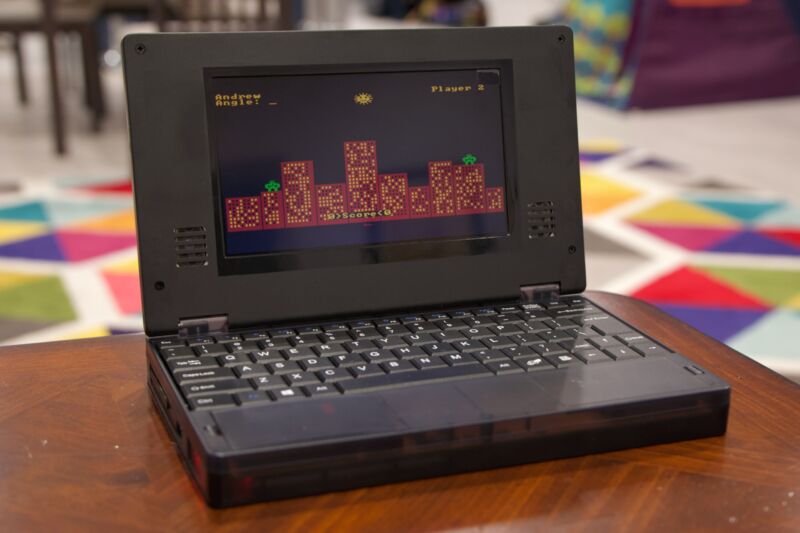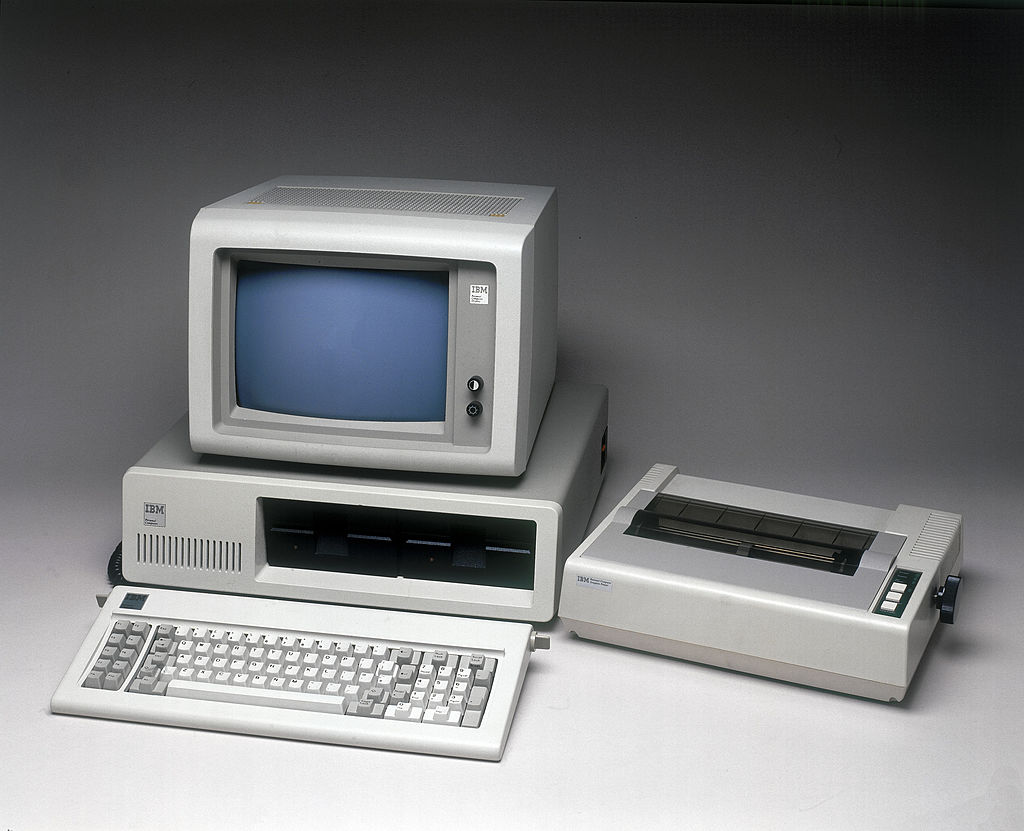
The words you're reading are time travelers.
They were written on a laptop that is technically brand new, in the sense that it was only released recently. But everything from the word processor this text was written in to the CPU that ran it is decades old.
I am writing this on the Book 8088, an utterly bizarre $200-ish imported system that uses a processor from 1984, a custom motherboard design, and a bunch of cobbled-together parts to approximate the specs of the original IBM PC 5150 from 1981. It's running at a blazing-fast speed of 4.77 MHz, at least when it's not in TURBO MODE, and it has a generous helping of 640KB (yes, kilobytes) of system memory. (If you can't buy one now, keep an eye on the listing because it has blinked into and out of stock a few times over the last few weeks).
This is a weird computer, even by the standards of all the other weird computers I've gotten my hands on. Its keyboard is cramped, it comes with a stolen BIOS and stolen software, and everything is always just slow, slow, slow. Its speakers keep crackling unhappily at me for no readily apparent reason. Its tiny, low-resolution LCD screen is hopelessly dim.
Tech support is supplied by the AliExpress seller in China, with both sides relying on automated translation to bridge the language gap. And I do need a little tech support because the system isn't quite working as promised, and the hardware that is working mostly isn't configured optimally.
And yet! The Book 8088 remains an interesting technological achievement, a genuine IBM PC compatible that shares a lot in common with my first ancient, terrible personal computer. I'm not sure it's a good buy, even for retro-tech die-hards who eat and breathe this sort of thing. But that doesn't mean it hasn't been a ton of fun to explore.
In this article, we'll mainly be looking at the hardware of the Book 8088, including its historical roots and what it has been like to get it up and running. In part two, we'll take a deeper dive into vintage and modern software to explore exactly what you can do on this kind of machine in 2023.
Intel’s 8088 and the rise of the “IBM-compatible”
Intel's first x86 processor was the 8086, which was released in mid-1978. It was the company's first 16-bit processor at a time when most were still 8-bit, and it could execute assembly code written for Intel's earlier 8008, 8080, and 8085 chips. But this same relatively forward-looking design made it more expensive to use, so it didn't become the chip that would help the x86 architecture take over the computing world.
That honor went to 1979's 8088, a cut-down version of the 8086 that could execute the same code and remained a 16-bit chip internally but which used an 8-bit external data bus. Halving the speed at which the CPU could communicate with the rest of the system obviously hurt performance, but it also meant that manufacturers could continue using it with parts made for older, cheaper 8-bit computer designs.

One of those companies was IBM.
The original x86 PC was a project that was turned around inside of a year by a small team within IBM, and a decision to use an "open" architecture (not in the modern "open-source" sense but in the "modular, non-proprietary hardware with expansion slots that any other company can develop for" sense) was done partly out of expediency. It shipped with an 8088, a 5.25-inch drive for 360KB 5.25-inch floppy disks, no hard drive, and 16KB of RAM. The original press release quaintly calls them "characters of memory" and numbers them in bytes; the MacBook Air I'm editing this on has 17,179,869,184 characters of memory.
The IBM PC was a huge success, so big that a market of "clones" rose up to run its apps and imitate its architecture, thanks to its commodity parts and reverse-engineered versions of IBM's proprietary BIOS. The clone-makers frequently undercut IBM on price, and they eventually started improving the hardware faster than IBM did (I've read former Compaq CEO Rod Canion's book on the topic, Open, which is bone-dry but an interesting firsthand account). And Microsoft stopped collaborating with IBM, mostly abandoning IBM's OS/2 project to pursue its own Windows business, selling software that could work on IBM systems and clones alike. By the time Windows 3.1 was released in 1992, the outlines of the PC as we know it today were clearly visible. And all modern Intel and AMD PCs retain, to some degree, compatibility with the original 8088.
The Book 8088 is a modern take on an IBM-compatible PC, though it more directly imitates the IBM PC XT, which was mostly a 5150 with a hard drive.
The IBM PC's design is simple enough that retro-tech hobbyists have successfully created modern open-source versions of its hardware and BIOS. The most notable work comes from Sergey Kiselev, who maintains an open-source BIOS and some open-source designs for motherboards and ISA expansion cards; newer chips have made it possible to condense the IBM 5150, its various expansion cards, and even a couple of newer amenities into a board small enough to fit into the Book 8088's tiny, chunky frame. The Book 8088 benefits from all of this work, though; at a bare minimum, its creators are violating the GPL license by modifying Kiselev's BIOS and removing his name from it (we confirmed this by looking at the BIOS files sent by the seller).
"While my work is open source, and I don't mind people using it in their projects, I do care deeply about the principles of open source software development and licensing," Kiselev wrote to Ars. "And whoever manufacturers this machine bluntly violates copyright law and licensing."
The Book 8088 also ships with MS-DOS 6.22 and Windows 3.0, along with other software; at this point, all of this stuff is broadly classified as "abandonware" and is freely available from WinWorldPC and other sites without protest from Microsoft, but allowing old software to stay up for historical and archival purposes isn't the same as inviting people to sell it on new hardware.
reader comments
263